Friday night Bobby and I got all dressed up and went out on a DATE. The occasion: our 13th wedding anniversary, and the 100th anniversary of the Great Dayton Flood of 1913. Our anniversary is today, March 25th, and that is also the day the city’s levees broke 100 years ago, after a wet winter and four punishing days of unprecedented rain. Being a history nerd, I’ve always thought that was kind of cool. The shared anniversary, I mean.

Because of the 100th anniversary of the flood, there are plenty of exhibits on the subject to be found around town. Bobby and I got dressed up Friday to celebrate our anniversary by going to the Dayton Art Institute’s social media preview night of their 1913 Flood exhibit. I was interested in seeing an artistic take on this momentous event in our city’s history. It did not disappoint! I’ll tell you all about it in just a sec. But first, a little background for you non-Daytonians.
Dayton sits on the Great Miami River, and downtown developed at a place where five rivers come together. Dayton had always had periodic flooding, and had some big old levees to protect the city. The levees had overflowed before, but never straight-out broken. Compounding the problem was the Miami & Erie canal, which ran right through downtown (where Patterson Boulevard is now). When the giant storm system moved in on Easter weekend in 1913, it dumped three months worth of rain on the region in four days – onto cold ground that was already saturated from a snowy, icy winter.
It was pretty much the perfect storm.
When the levees broke, water rushed into downtown and into low-lying areas just north of the river. Over 360 people died, 20,000 homes were destroyed (not to mention businesses), and 65,000 people were displaced. A lot more people would have perished if it weren’t for a lot of heroic actions by neighbors helping neighbors. The rescue stories are incredible!
The flood is one of my favorite subjects and I could go on and on, but I won’t. You can find more information and some great pictures here at Dayton History.
But back to the exhibit at the Dayton Art Institute. It’s actually three exhibits in one. The first part is Storm, beautiful, very large paintings of storms by artist April Gornik that are intense and energetic. I am hardly an art critic so forgive my inept descrition – but they are striking to say the least. We weren’t allowed to take photographs of Gornik’s paintings, but that’s ok, because you should go see them yourself if you can.
The second part of the exhibit is Watershed: 100 Years of Photography along the Great Miami River. This was my very favorite, and most historical part of the exhibit. There were many amazing old photographs of the flood and its aftermath, paired with new photographs of the same modern-day locations, taken by talented Dayton photographer Andy Snow.
Both sets of photographs were absolutely amazing, the older set because of the drama and devastation they portrayed, and the newer set because of the clarity and artistry involved in creating the modern-day portraits. You must go see it! The exhibit contained photographs not from just Dayton, but from towns all up and down the Great Miami river – an entire region was devastated, not just a city. There were pictures from Piqua, Troy, Miamisburg, West Carrollton, Hamilton, Franklin, and more. The destruction went for miles and miles.
Another component of the Watershed portion was a display of old hand-tinted lantern slides depicting the flood waters and aftermath. The curator explained to us that these slides equate to the Powerpoint presentation of today. After the flood, these slides were used in the campaign to raise funds for the Miami Conservancy District to build the system of dams we have today that protect us from another catastrophic flood event. The campaign, with the slogan “Remember the Promises You Made in the Attic” (many were marooned in attics and on rooftops for three to four days) was wildly successful and raised $2 million dollars – in 1913 money – in TEN DAYS. Mostly from plain old private citizens who were affected by the flood! Here are a few of those convincing images (I took these photographs of the lantern slides with my camera at the exhibit):

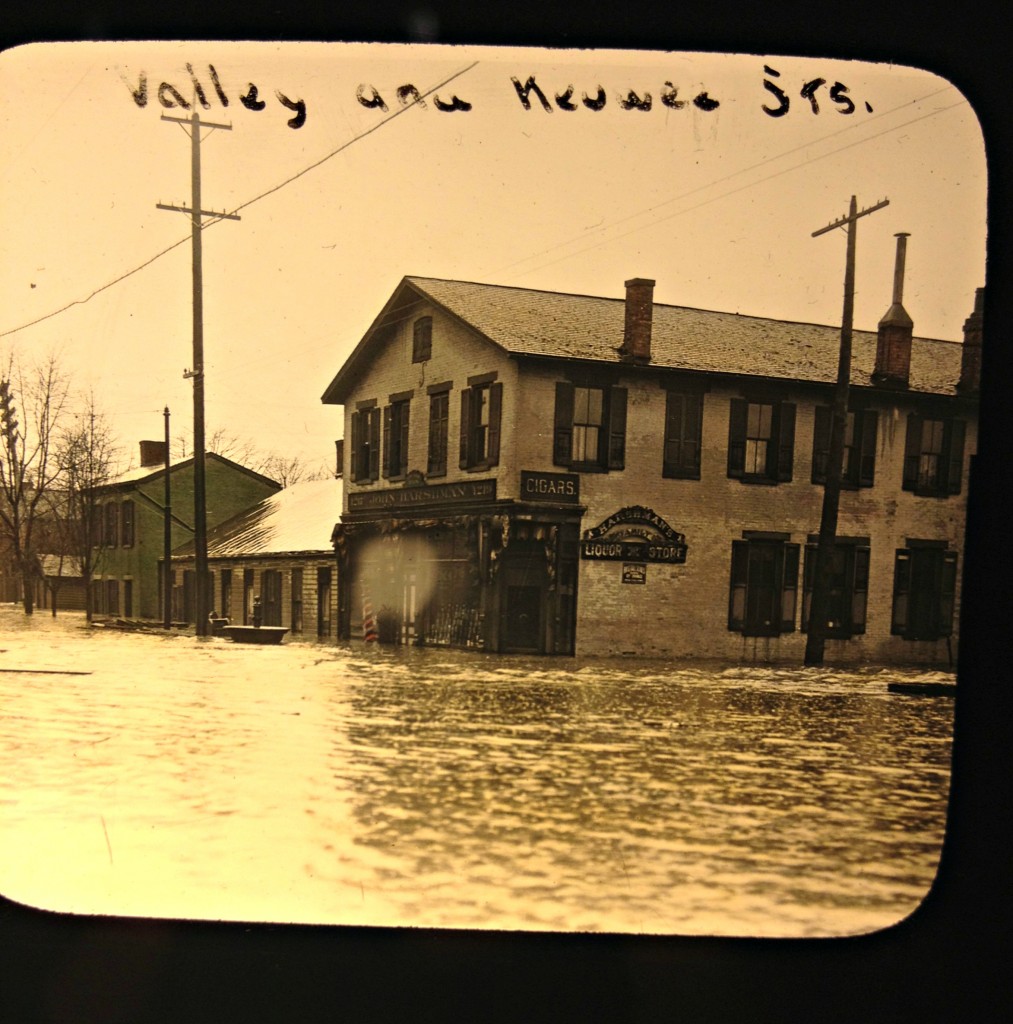
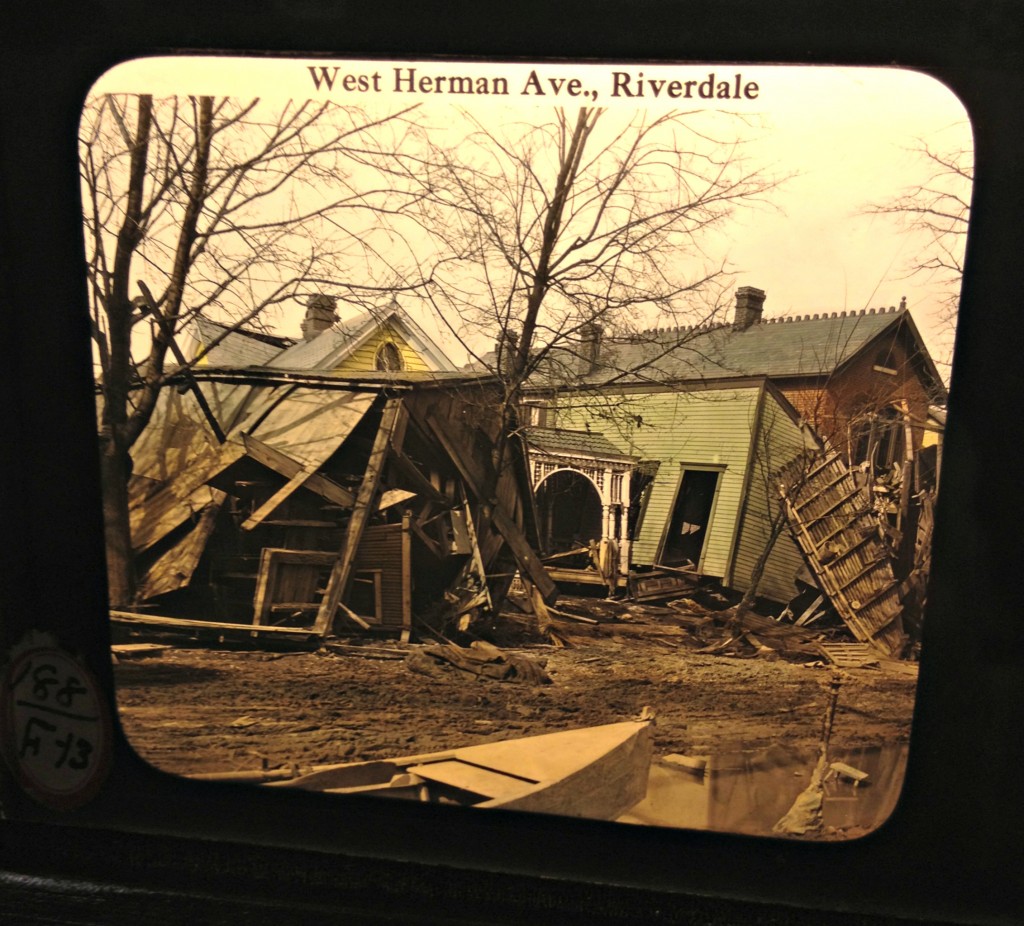
Can you even imagine? I surely cannot.
The final part of the exhibit is called Riverbank: Exploring our River-Centered Development. This is an interactive display with images of the city’s river development projects (some that happened, some that didn’t) over the years. It was really interesting, especially for those of us who are proponents of downtown. But it wasn’t nearly as eye-appealing as the other two components of the exhibit.
If you’re in Dayton, I hope you will go see this exhibit! If you buy a ticket to the DAI’s exhibit, you get 1/2 off the exhibit at Dayton History’s Carillon park – which is going to be my next stop on my flood tour. I can’t wait!
Oh, and happy anniversary to my husband of 13 years! Since they had a flood 100 years ago and we have a snow storm for today, I sure am glad we had beautiful weather in 2000! Love you, baby. In flood and in blizzard (and sunshine, too).
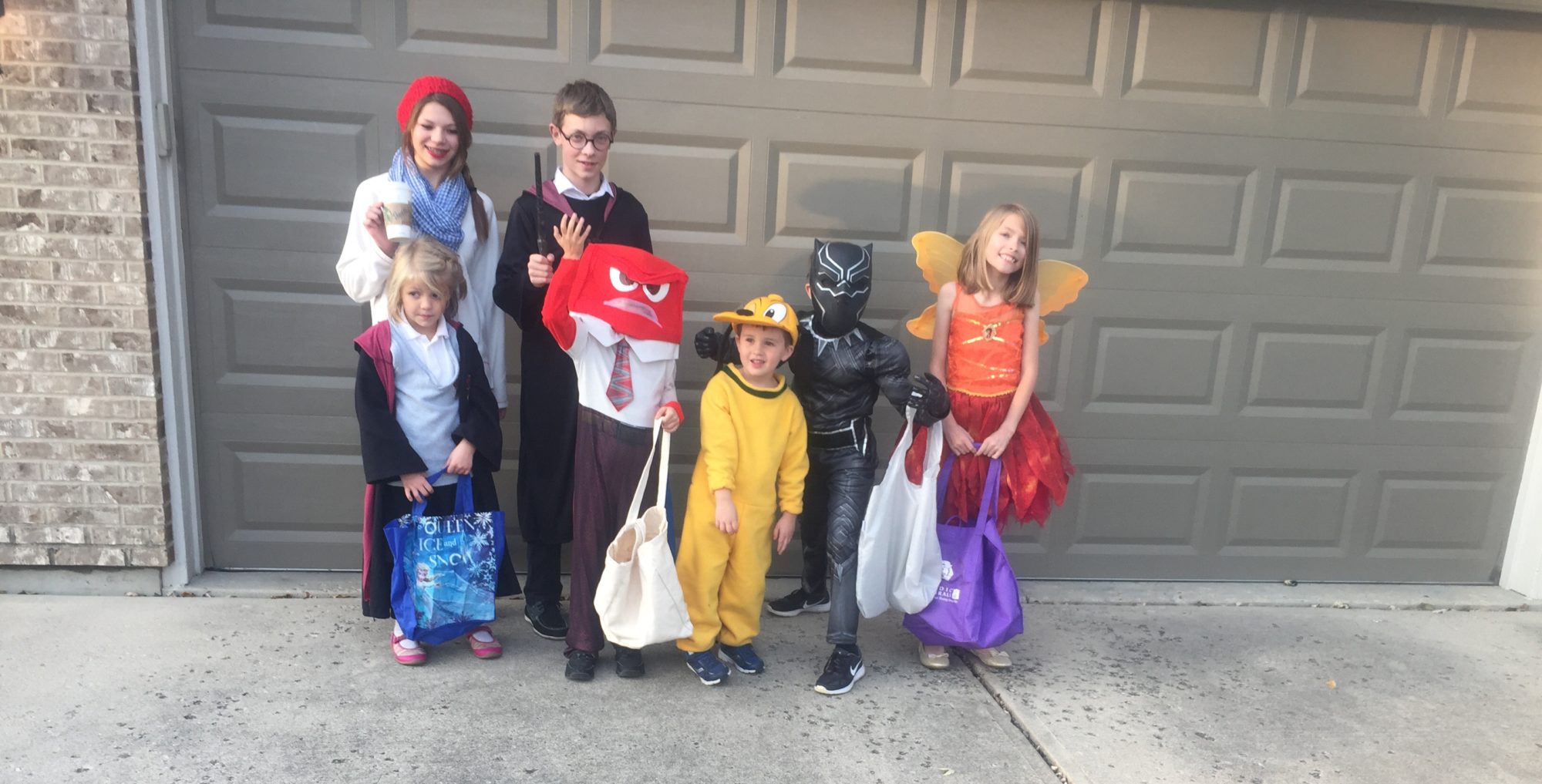
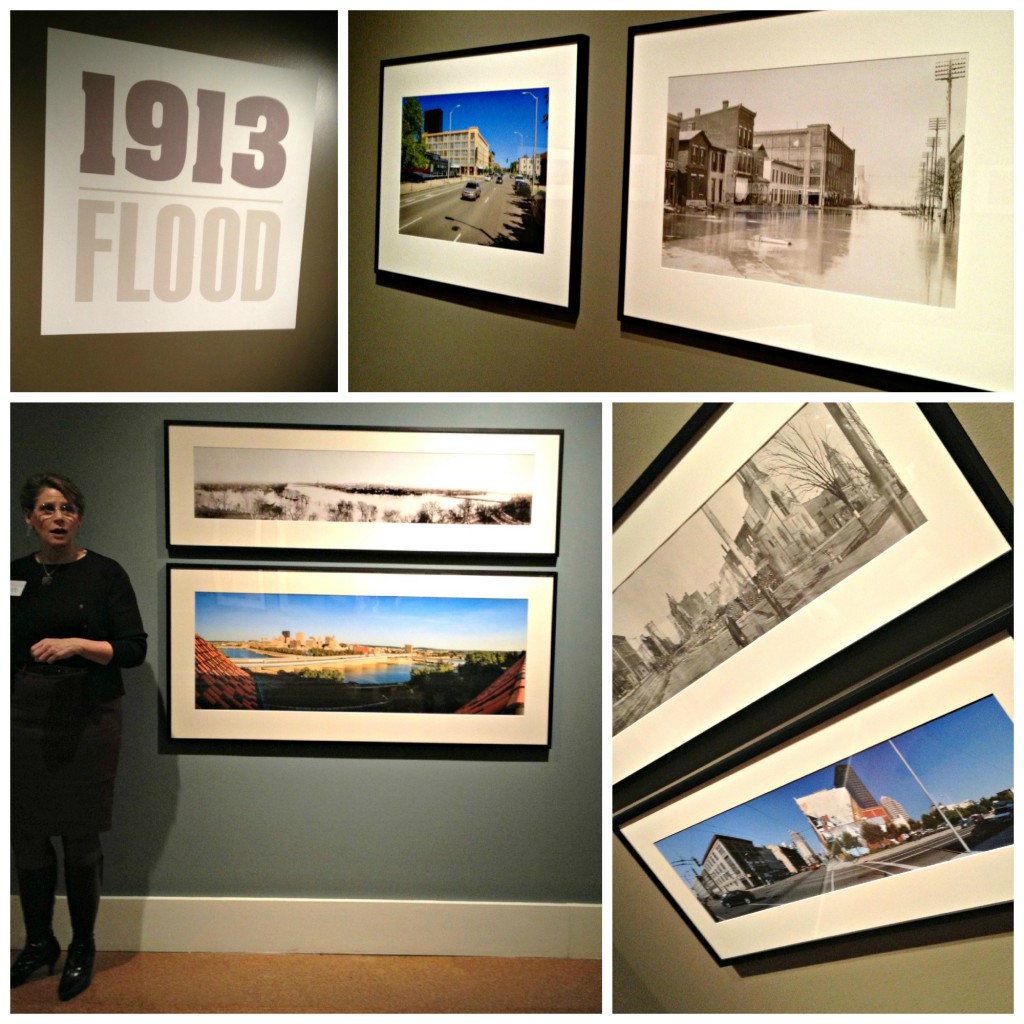
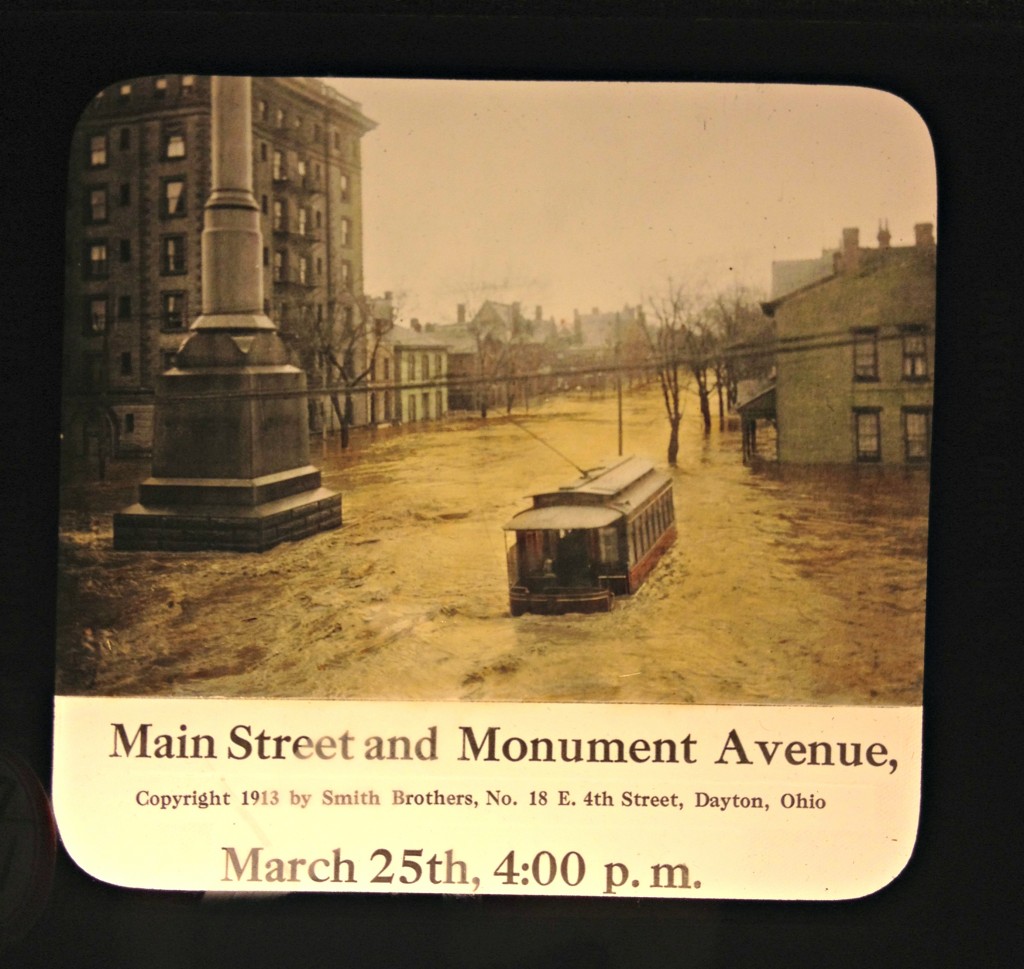
Happy Anniversary, you’re still a cute couple!
UP
1. You are so random.
2. I love it. Andy and I had an IEP and then ran to Costco on our 10 year anniversary. We would have been APPALLED to know this back in the day when we were all dressed in white and had not a single stretch mark. Funny how that is.
Happy anniversary! I can’t wait to go to the exhibit, it looks really interesting. You talked me in to it!
Happy Anniversary!
Great blog about the great flood exhibit! Happy Anniversary!
Nice!! You know I’m a Dayton history buff, too – so bummed I live so far away and can’t attend this! I used to clean a house in the Oregon that had a water damage mark on its wall where the floodline was – the original owners put a little gold frame around it to mark the spot.
Thanks for the exhibition review and happy anniversary!! xo
Happy Anniversary! I so hope I’m able to check out the exhibit 🙂 From one nerd to another….